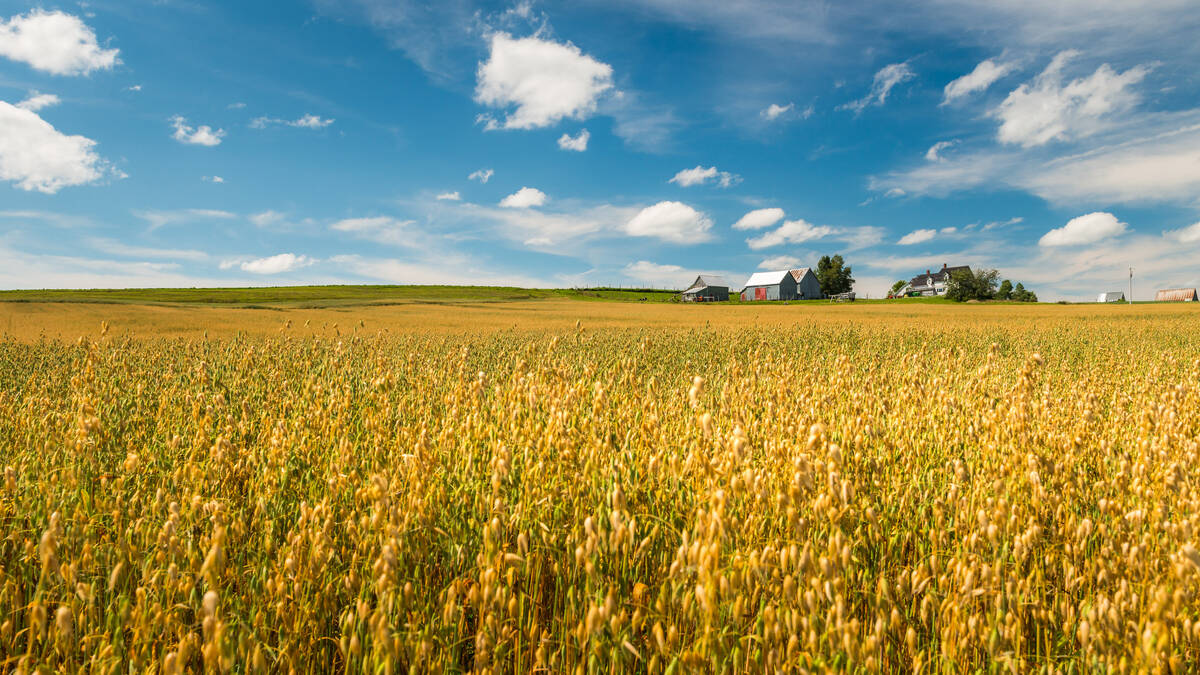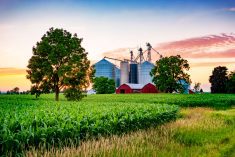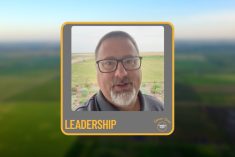A German-language press release issued a few weeks ago by DLG, the German Agricultural Society, captures in a single word one of this year s most astute observations about the global farm machinery market. It s the German word innovationsoffensive, which means just the same on our side of the Atlantic, and is just as valid too.
DLG points out there were an unprecedented 320 new products registered for this fall s Agritechnica farm machinery show in Hannover. Show organizers are taking that as clear evidence that machinery manufacturers have embarked on an urgent, almost frantic mission to develop and launch new machines and technologies to farmers worldwide.
Read Also

Risk management for the farm means considering people, too
Wheat fields in New Brunswick, Canada.
The pace of new product introductions this year has been nothing short of amazing. When John Deere held its dealer convention in Indianapolis, Indiana, this summer, it billed the event as The largest, most significant product introduction in the company s 174-year history.
Barely two weeks prior to Deere s release, AGCO held its dealer convention in Kansas City, Missouri, with company executives describing it as the largest equipment introduction in the history of the industry. Given that the company unveiled new machines in no less than 15 different product lines, it s hard to argue with that description.
But aside from new sheet metal being presented in the usual way, the real advances were in telematics and guidance technology, and all the companies are promising more to come in that part of the market sooner rather than later.
Telematics is simply the industry term that refers to wireless transmission of information to and from equipment in the field. That segment is really where the battle is raging.
Why are manufacturers releasing so much new technology now? For one thing, demand for new machinery is high, so it s a good time to release new products.
The USDA says net (U. S.) farm income in 2011 will be $95 billion, says Steve Koep, VP of North American sales at AGCO. That s about $20 billion greater than it was in 2010, so there s a lot of disposable income. That really translates pretty well for us, we think.
This increasing global demand (for farm machinery) is real, adds John Lageman, VP, marketing and sales, Region 4, AG and Turf at John Deere. That ever-growing demand is there.
But the creation of new farm machines doesn t happen overnight. It s a four-or five-year process (to bring new products to market), says Bob Crain, senior VP, general manager for AGCO North America. That means this year s flurry of new introductions isn t a knee-jerk reaction to market conditions. It has been a long time in the making for all the brands.
The types of products that the companies are introducing are directly related to the overall change now occurring in the machinery market, and all brands are working quickly to try and keep up with it. Large-scale farmers are no longer just looking for new paint, hence the focus on telematics.
Lageman believes demand for most new equipment today is directly tied to farmers ability to make a sensible business case for it. Machines have to improve productivity and profitability. Deere sees implementing telematics technology as one of the most significant ways to do that, which explains why Deere believes ramping up the technology level of new machines is critical for driving sales.
There is a lot of technological capability built into them, says Lageman. Agriculture sometimes gets a bad rap, being all about bearings, shafts and mechanical things. But we have electronic circuits (in them) that are frankly more advanced than a lot of our defence aircraft.
Deere s new S Series combines boast some four million lines of software code and 26 computers receiving input from 88 sensors, so the description is no exaggeration. These machines are smarter than the fist space shuttles.
Adding telematics to the machinery sales mix could be a game changer. What is evolving is the opportunity to sell solutions, Lageman adds. Customers are looking for solutions rather than just a tractor or a combine. They want to solve a problem.
What are those machinery needs, specifically? According to Lageman, most of the demand is around technology that will help farmers cope with tight labour resources. Technology can help them manage their labour force as they are challenged to increase their overall productivity.
The competition among manufacturers to give farmers that technology is becoming intense. To keep its front-runner spot as the largest farm machinery manufacturer, staying on the cutting edge of technology and reading the market trends is critical for Deere. For the youngest global company, AGCO, developing new and better products is critical for growing its market share.
But staying on the cutting edge doesn t come cheap. We ll spend about $300 million on R&D this year, says Crain. To grow, AGCO has committed to a long-term strategy that involves continued development and improvement to its equipment. The great majority of our investment will be line extensions and improvements, but certainly there ll be some brand-new product lines, he adds.
Aside from feeling the competition from each other in the Big Three group of global manufacturers, AGCO, Deere and CNH may also be feeling pressure from below, specifically from short-line companies that are also responding to the change in producer demand.
So far, it has been primarily the smaller companies around the world that have introduced autonomous farm equipment technologies to the market, albeit in a very limited number of applications.
We re excited to introduce the first truly autonomous row-crop solution in the world on this scale, says Susanne Kinzenbaw Veatch, vice-president and chief marketing officer at Iowa-based Kinze. This technology could be used to do a variety of tasks, including planting, nourishing, maintaining and harvesting crops& until now, no other manufacturer associated with row-crop production has offered truly autonomous technology like this.
The Kinze Autonomy Project is targeted at the same need for labour efficiency that Lageman sees. But Kinze s approach here is to almost completely eliminate the need for skilled operators. According to the company, a farm manager will only need to perform cursory monitoring of the robot equipment as it goes about its work. With this technology, producers can set the equipment to run all night if necessary, adds Kinzenbaw Veatch.
If this kind of autonomous technology does hit the market soon, farms will begin to look a lot different. So will the machines working on them.
Despite reliability and safety concerns, the major brands may have no choice but to move telematics to the level of complete automation sooner rather than later. Maybe this old Second World War adage says it best: Just get on with it. CG















